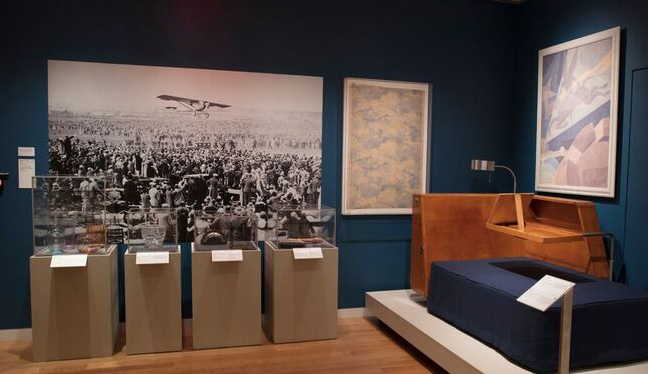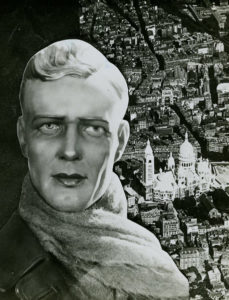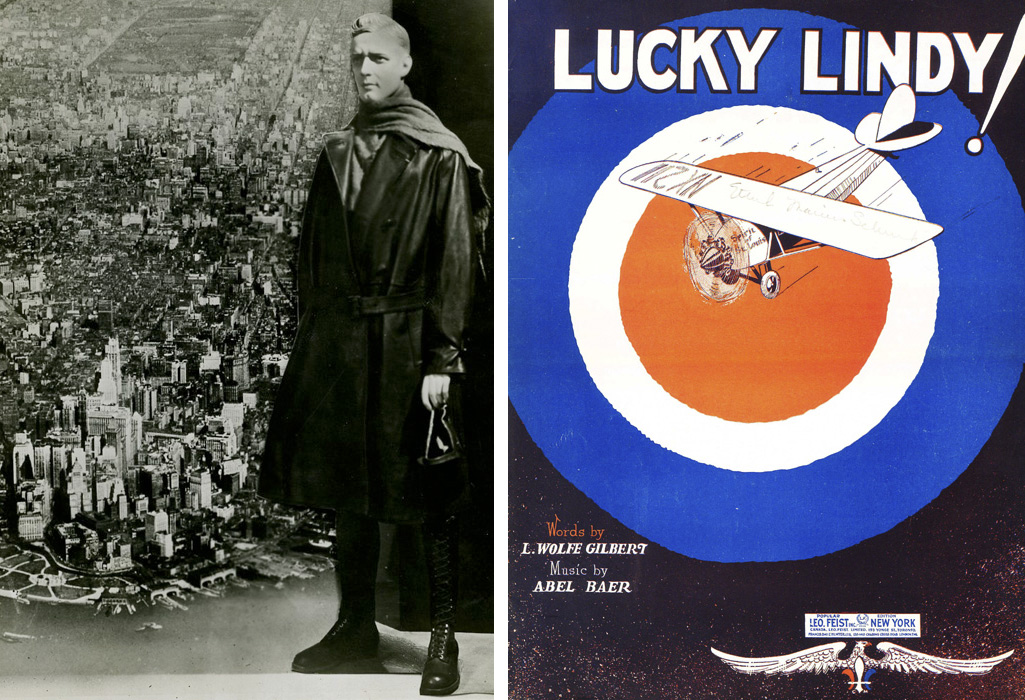The first non-stop, first transatlantic flight of Charles Lindbergh from New York to Paris in May 1927 was acclaimed around the world as one of the most remarkable and heroic accomplishments in history. The people of Paris were especially excited about the journey since their city was where Lindbergh would be touching down after nearly 34 hours flying time. Upon arrival Lindbergh was the toast of Paris; designers and department stores promoted the sales of merchandise with this popular and iconic hero.

On view in the Cooper Hewitt, Smithsonian Design Museum’s exhibition The Jazz Age: American Style in the 1920s. Photograph May 1927. Charles Lindbergh piloted the “Spirit of St. Louis” on the first solo non-stop trans-Atlantic flight, landing at Le Bourget, Paris on May 21, 1927, and then at the Croydon Aerodrome outside of London eight days later. This widely anticipated event was witnessed by Picasso and other artistic luminaries.”
On view in the Cooper Hewitt, Smithsonian Design Museum’s exhibition The Jazz Age: American Style in the 1920s. Photograph May 1927. Charles Lindbergh piloted the “Spirit of St. Louis” on the first solo non-stop trans-Atlantic flight, landing at Le Bourget, Paris on May 21, 1927, and then at the Croydon Aerodrome outside of London eight days later. This widely anticipated event was witnessed by Picasso and other artistic luminaries.”[/caption]
“Lucky” Lindbergh became more famous than any Hollywood movie star – everyone recognized his face and knew his name. These photographs and sheet music cover in the Cooper Hewitt Library Special Collections are only a small part of the way history and life is recorded. Photographer Thérèse Bonney documented Paris life from 1925-1935, and captured these images of Lindbergh in store window displays. Music publishers produced a variety of popular songs, shows and other vehicles of popular culture celebrating Lindbergh and the Spirit of St. Louis.

Photograph of store window display. Paris, France. n.d. Headshot of Charles Lindbergh in wax by Siégel in a scarf and leather jacket positioned atop an aerial view of Paris. Thérèse Bonney (1897-1978). Cooper-Hewitt Rare Books. 2000-42-1.
“Lindy” Charles Lindbergh was even celebrated in dance. Music, dancing, cabarets, and nightclubs were, of course, the defining element of the jazz age. The “Lindy Hop” became associated with Lindbergh’s transatlantic airplane flight, but there is controversy surrounding the origin of the name of the dance. The “swing”, “hop” and “lindy” were already established African American dance forms, but the name probably became connected in the minds of many after reading American newspapers headlines reading: “Lucky Lindy Hops the Atlantic!” Frequently described as a jazz dance, the story goes that the dancer “Shorty” George Snowden renamed the breakaway dance as the Lindy Hop in a dance contest in 1927 at the Manhattan Casino (New York City), a ballroom located uptown in Harlem; and that he explained “We flying just like Lindy did”. One of the reasons it could be associated with flight is because of the movements in the dance where one’s feet leave the floor
The Jazz Age era was identified with the speed and sounds of modern technology and a new age of communication and travel- music, movies, cars, new ocean liners, and airplanes.
Elizabeth Broman is a Reference Librarian at the Cooper Hewitt, Smithsonian Design Library.
